What began as a humble line of plush toys crafted with care and creativity eventually morphed into a global craze that gripped the hearts and wallets of collectors around the world.
Beanie Babies, adorned with their iconic heart-shaped tags, became more than mere playthings. They became coveted symbols of an era, representing both the innocent joy of childhood and the dizzying allure of financial gain.
Beanie Babies were first introduced in 1993 by Ty Warner at the World Toy Fair in New York City, New York. Manufacturing began in 1994, and the toys were first sold in stores located in Chicago, Illinois for around $5 U.S. Dollars.
There were nine original Beanie Babies: Legs the Frog, Squealer the Pig, Spot the Dog, Flash the Dolphin, Splash the Whale, Chocolate the Moose, Patti the Platypus, Brownie the Bear (later renamed “Cubbie”), and Pinchers the Lobster (with some tag errors labeled “Punchers”).

1997 Beanie Collector Magazine.
At first, sales were relatively slow, and by 1995 many retailers refused to buy the bundles the toys were offered in, while other retailers refused to buy Beanie Babies entirely.
Around the same time, Ty Inc. decided to restrict the quantity of Beanie Babies to be produced and distributed. The company began limiting the number of Beanie Babies a store could buy per month to 36 of each character.
Ty Warner also decided to “retire” characters after a certain period of time, meaning the production of specific characters would eventually cease.
Because these decisions created scarcity, they led to a significant increase in sales and started the trend of collecting and reselling Beanie Babies. Beanie Babies are deliberately under-stuffed. This led to a criticism that the toys looked “cheap”; however, this set them apart from most stuffed animals on the market which could not be posed easily. Ty Warner has said that this understuffing method made the toys look “real”.
Beanie Babies are deliberately under-stuffed. This led to a criticism that the toys looked “cheap”; however, this set them apart from most stuffed animals on the market which could not be posed easily. Ty Warner has said that this understuffing method made the toys look “real”.
Another important design element is the tag. Since the beginning, Beanie Babies have included two tags for identification: a heart-shaped “swing tag” at the top, and a fabric “tush tag” at the bottom.
Both tags have been redesigned completely over time. Between 1994 and 1996, the swing tags had “To” and “From” blanks in them for use as gifts.
Starting in early 1996, the tags include four-line poems related to the Beanie Baby, and a date of birth for the toy.
The poem and birthday concept was created by Lina Trivedi who is credited as authoring the poems on the first 136 Beanie Babies that were introduced to the marketplace.

A divorcing couple splitting up their beanie babies in court in Las Vegas, 1999. The couple was unable to split the collection by themselves, so they spread it on the courtroom floor and divided it up under the judge’s supervision.
Early in 1995, Ty created the first iteration of the Ty website, the first business-to-consumer website designed to sell to consumers directly.
To go along with the launch of the Ty website in 1995, all Beanie Baby hangtags were printed with the Ty website URL and a new piece of text was added with the company’s name and the following message: “Visit our website!!!”
As a result, many consumers visited Ty’s website for more information on Beanie Babies. This endeavor would mark the beginning of the Beanie Babies boom.
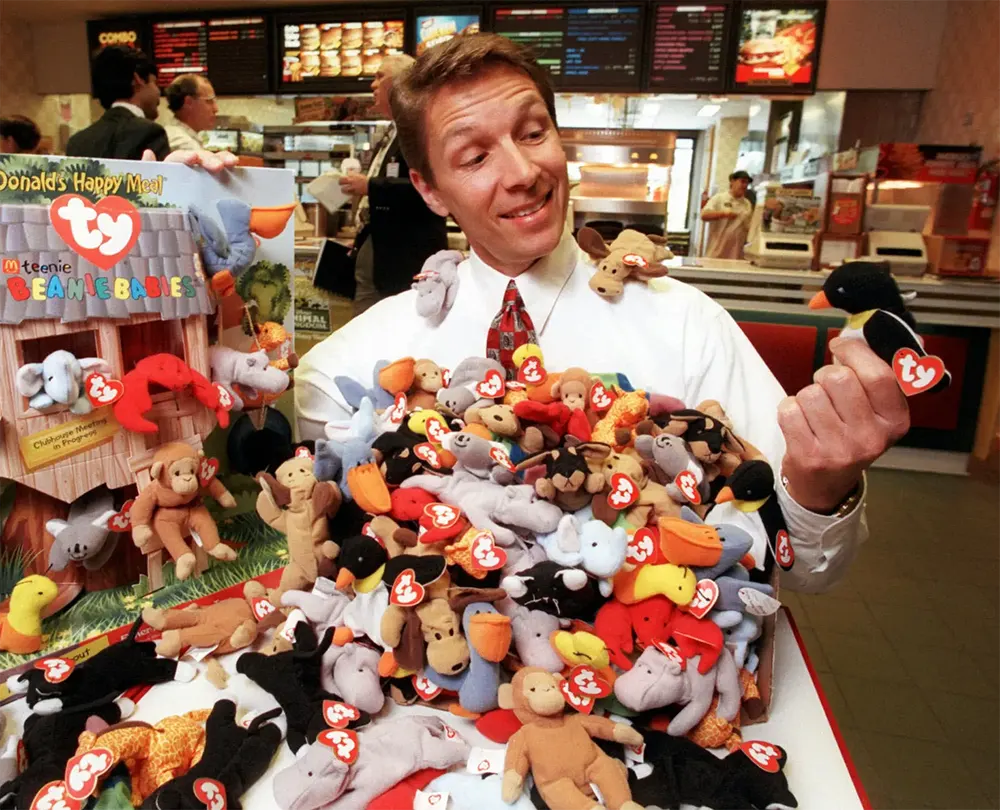
Beanie Babies began to emerge as popular collectibles in late 1995, and became a hot toy. The company’s strategy of deliberate scarcity, producing each new design in limited quantity, restricting individual store shipments to limited numbers of each design and regularly retiring designs, created a huge secondary market for the toys and increased their popularity and value as a collectible.
They systematically retired various designs, and many people assumed that all “retired” designs would rise in value the way that early retirees had.
The craze lasted through 1999 and slowly declined after the Ty company announced that they would no longer be making Beanie Babies and made a bear called “The End”.
Sometime after the original announcement that the company would stop production, Ty asked the public to vote on whether the product should continue; fans and collectors voted “overwhelmingly” to keep the toys on the market.
At its height of popularity, people would flip Beanies for as much as ten-fold on eBay. Indeed, at its height, Beanies made up 10% of eBay’s sales. Some collectors insured their purchases for thousands of dollars.
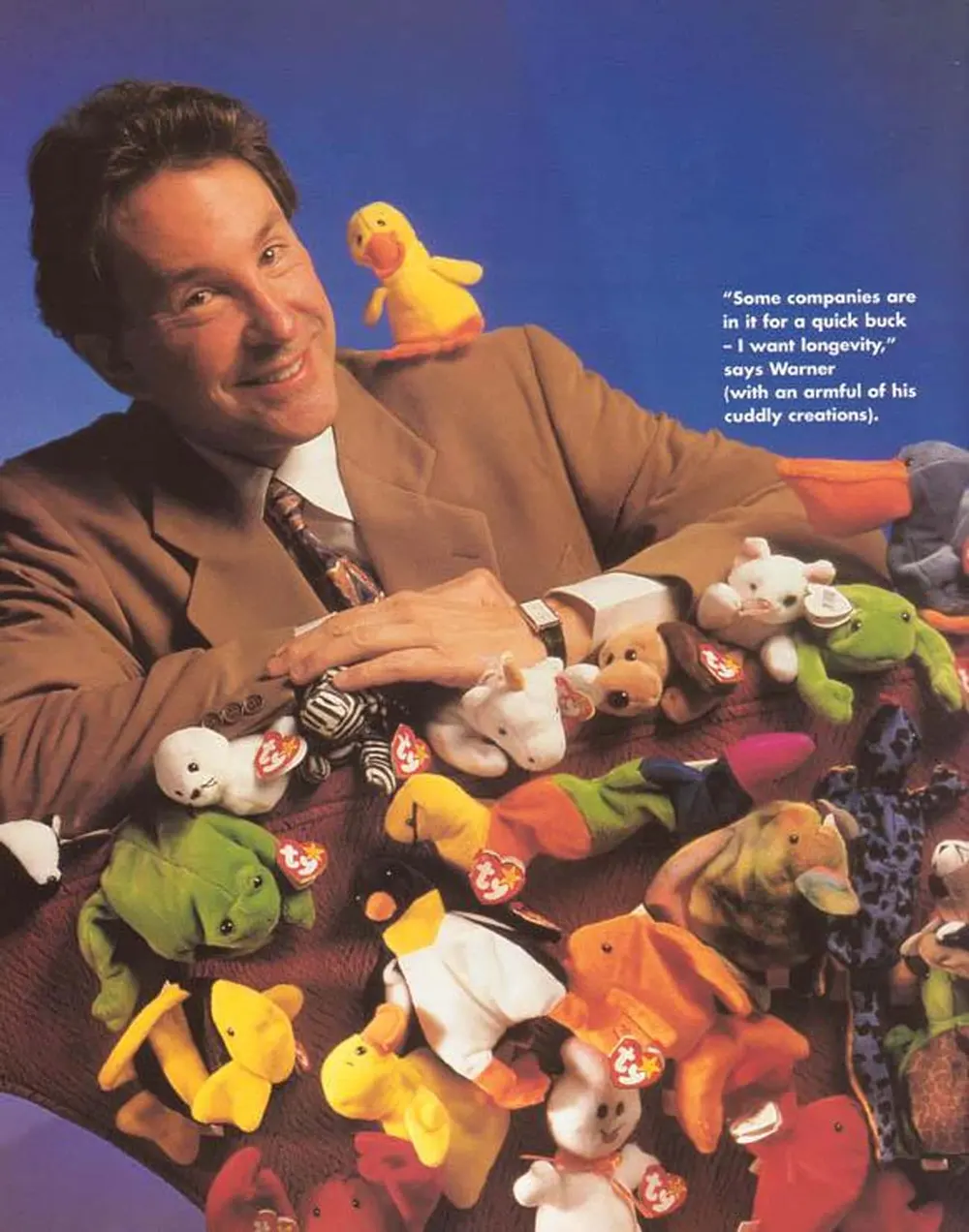
Suburban Chicago businessman Ty Warner became a billionaire after creating Beanie Babies collectibles.
However, as quickly as the Beanie Baby craze ignited, it eventually fizzled out, leaving behind a trail of deflated expectations and abandoned collections.
One of the primary reasons for the demise of the Beanie Baby craze was market saturation and overproduction.
As the demand for these plush toys skyrocketed, Ty Inc., the company behind Beanie Babies, ramped up production to meet the surging popularity.
This flood of new Beanie Babies flooded the market, diluting their perceived rarity and exclusivity. With supply exceeding demand, the once-inflated prices began to drop, causing disillusionment among collectors and investors.

Ty Inc. made strategic decisions that had an impact on the Beanie Baby market. They introduced larger and more expensive product lines, such as Beanie Buddies and Beanie Kids, which failed to resonate as strongly with collectors.
Additionally, the company launched new ventures, including trading cards and licensed merchandise, diluting the primary focus on Beanie Babies.
These diversions in product offerings and marketing efforts diverted resources and contributed to the declining popularity of Beanie Babies.
Moreover, the advent of the internet and the rise of e-commerce had a significant impact on the collectibles market, including Beanie Babies.
Online platforms provided greater transparency in pricing and connected buyers and sellers directly, diminishing the influence of traditional collectibles stores.
This shift allowed collectors to assess the true value of Beanie Babies, reducing the speculative nature of trading and undermining the hype that once surrounded them.
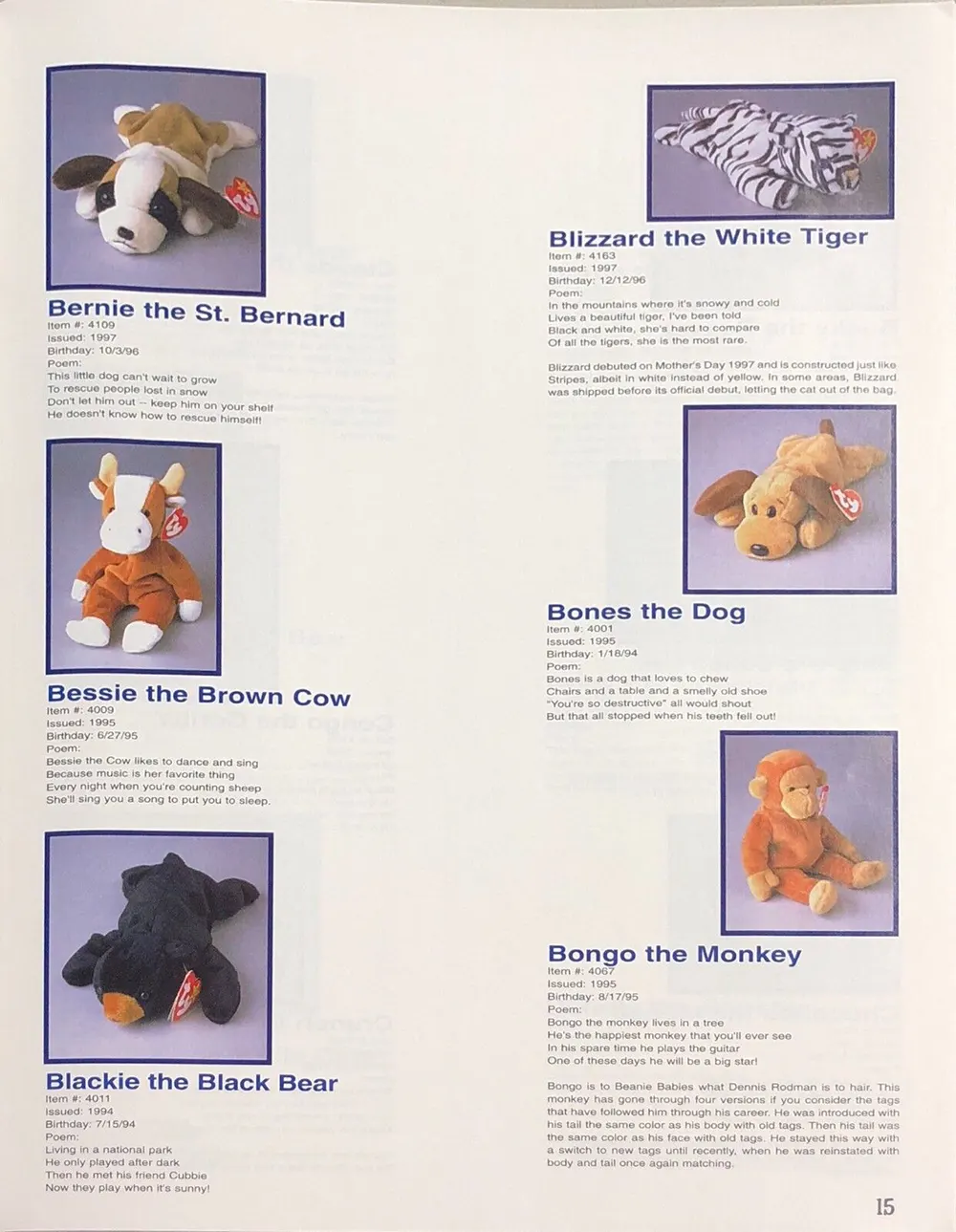

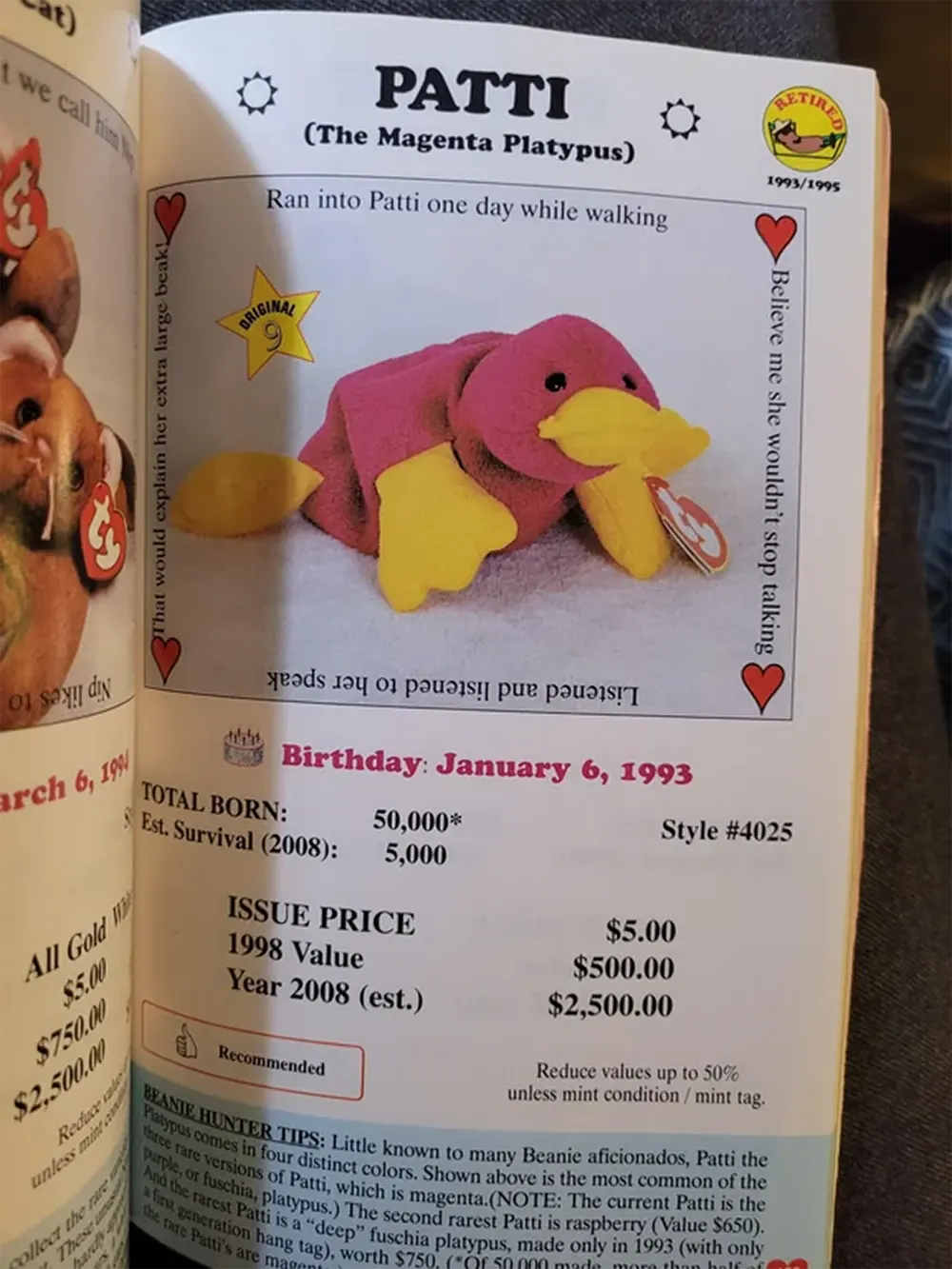

An old Beanie Baby price guide, and each Beanie has an estimated 10-year future value.

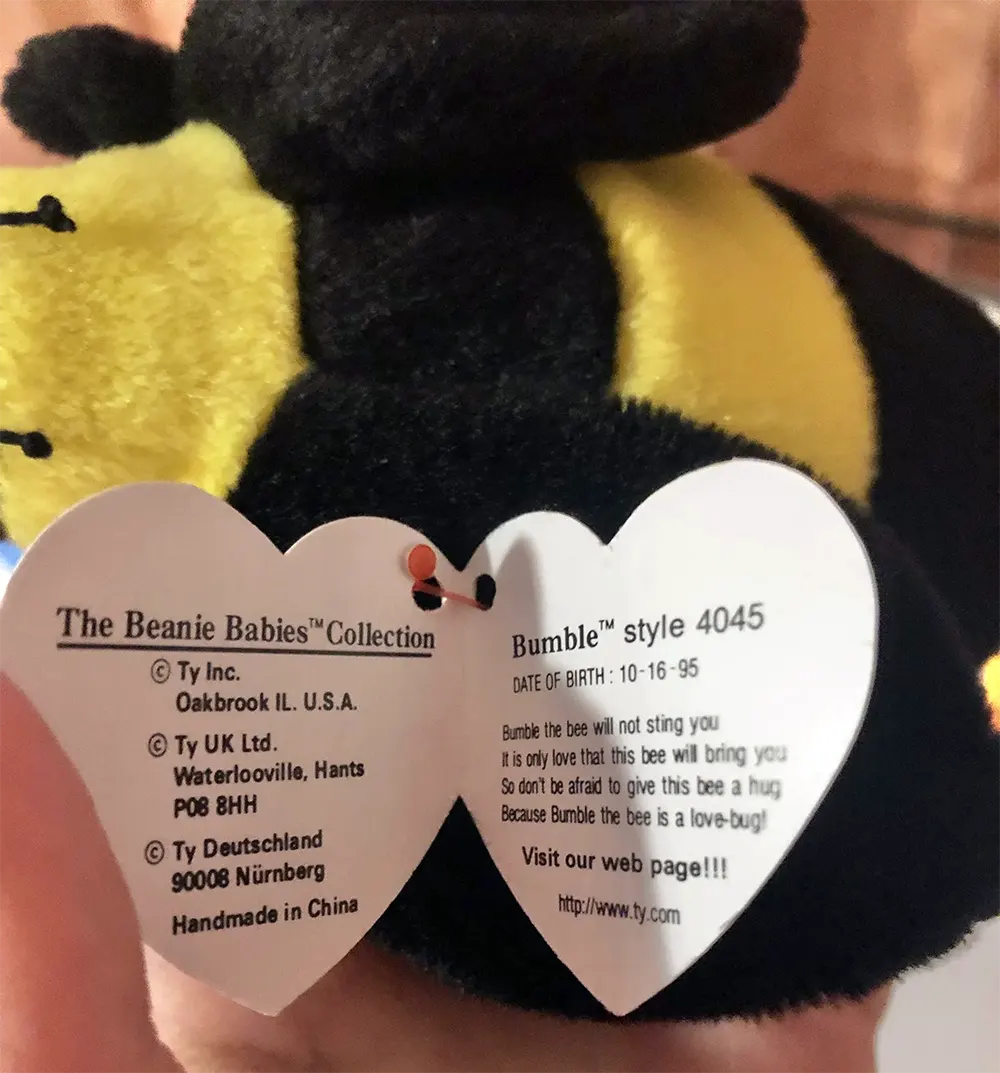

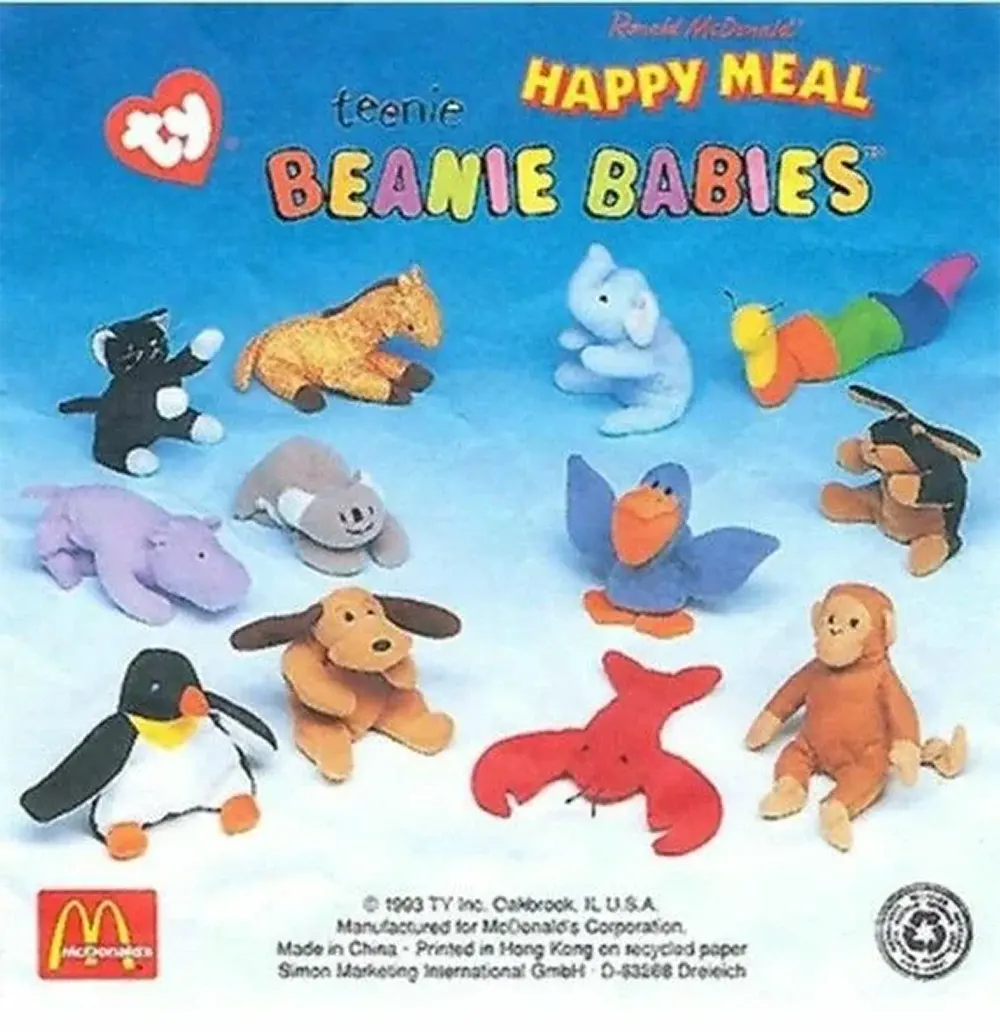


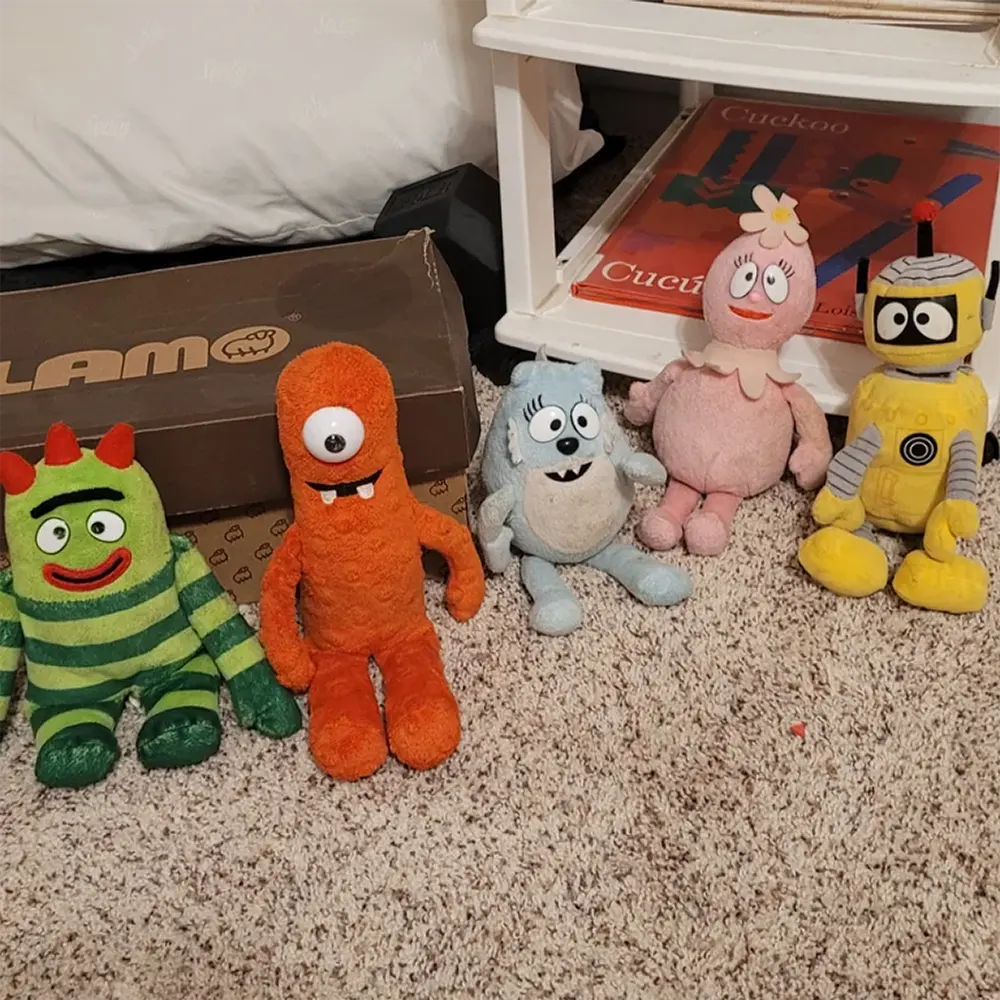


(Photo credit: Pinterest / Reddit / Wikimedia Commons / Flickr).